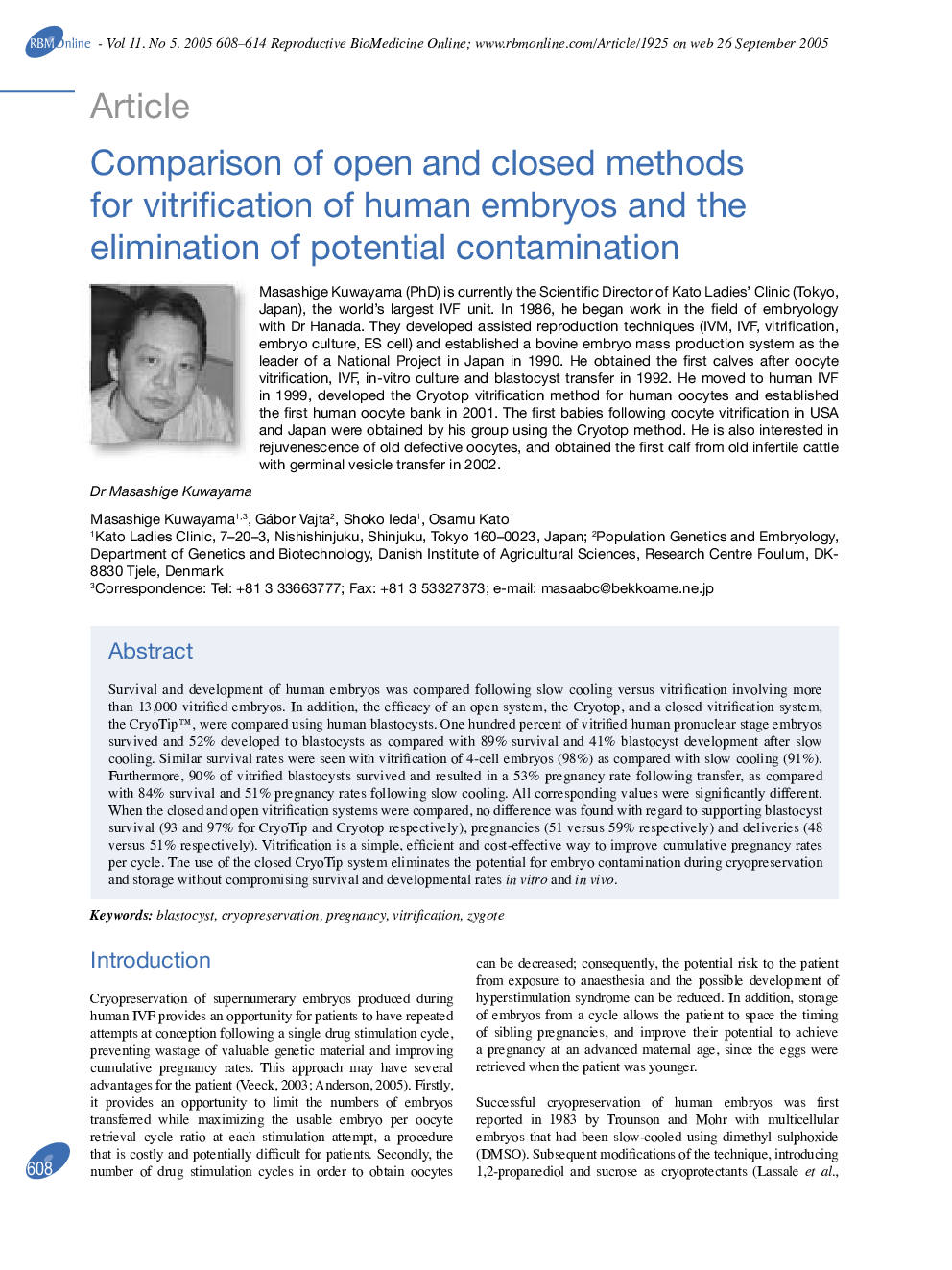| Article ID | Journal | Published Year | Pages | File Type |
|---|---|---|---|---|
| 9334881 | Reproductive BioMedicine Online | 2005 | 7 Pages |
Abstract
Survival and development of human embryos was compared following slow cooling versus vitrification involving more than 13,000 vitrified embryos. In addition, the efficacy of an open system, the Cryotop, and a closed vitrification system, the CryoTipâ¢, were compared using human blastocysts. One hundred percent of vitrified human pronuclear stage embryos survived and 52% developed to blastocysts as compared with 89% survival and 41% blastocyst development after slow cooling. Similar survival rates were seen with vitrification of 4-cell embryos (98%) as compared with slow cooling (91%). Furthermore, 90% of vitrified blastocysts survived and resulted in a 53% pregnancy rate following transfer, as compared with 84% survival and 51% pregnancy rates following slow cooling. All corresponding values were significantly different. When the closed and open vitrification systems were compared, no difference was found with regard to supporting blastocyst survival (93 and 97% for CryoTip and Cryotop respectively), pregnancies (51 versus 59% respectively) and deliveries (48 versus 51% respectively). Vitrification is a simple, efficient and cost-effective way to improve cumulative pregnancy rates per cycle. The use of the closed CryoTip system eliminates the potential for embryo contamination during cryopreservation and storage without compromising survival and developmental rates in vitro and in vivo.
Related Topics
Health Sciences
Medicine and Dentistry
Obstetrics, Gynecology and Women's Health
Authors
Masashige Kuwayama, Gábor Vajta, Shoko Ieda, Osamu Kato,
